What is BBQ? Champion pitmaster Christie Vanover explains the difference between BBQ, grilling, smoking and live fire cooking.
There are a lot of words that get tossed around interchangeably. I know I’m guilty of it myself, like grilling, barbecuing, smoking, griddling, live fire cooking. They all have similar meanings, but they are a little bit different.
So let’s break it down.
What BBQ is not!
Before we define barbecue, let me tell you what barbecue is not.
To me, barbecue is not putting meat in a slow cooker and adding barbecue sauce. Sure. The slow cooking process does break down the meat and make it more tender, especially if you have a tough cut of meat, like a brisket or pork shoulder.
And you get the flavor of barbecue because you get the molasses and the ketchup and the sweetness of barbecue sauce.
But to be essential barbecue, you have to understand managing fire. When it comes to cooking with fire, you’ve got to understand your temperatures, your fuel sources, your heat zones.
What is BBQ vs. grilling vs. smoking vs. live fire?
Let’s start with grilling. Grilling is one of the most common forms of outdoor cooking. In this instance, you’ve got a grill. Your heat source is either gas, charcoal, pellet, maybe wood, maybe even electric, which we’ll touch on in a little bit.
Most of the time when you’re grilling, you’re cooking over a direct heat zone. What I mean by that is you’ve got your gas. You’ve got your grill grate, or you’ve got your charcoal, or your pellets, or whatever else. But you’ve got your heat source, and you’ve got your grill grate.
From there, you place your meat or veggies right on top of the grill grate and you’re cooking directly over the heat. This is called a direct heat zone. That’s grilling.

Grilling is usually hot and fast. It’s when you’re searing steaks, searing burgers, searing asparagus, whatever your veggie preference is.
But you’re getting that quick heat. You’re cooking things in maybe three minutes, maybe 20 minutes, but it doesn’t take a whole lot of time.
That’s grilling. It’s over direct heat, over some sort of heat fuel source.
When you’re grilling, you’re cooking at temperatures usually about 350F degrees and above, maybe around the 500F range, sometimes even higher if you’ve got like a sear station on your grill and you’re doing some killer steaks.
A cool thing about grilling is that’s how you get grill marks.
Because you’ve got your heat source below your grill grates, your grill grates are metal and they’re going to heat up and get really hot.
Well, when you add your food to the grill grates, that’s when they sear those grill marks right in there.
If you get fancy, you can do those 45-degree turns and get those diamond marks. They really look prettier than add any flavor or taste to it, but it is a cool accent that you get with grilling.
One of the main reasons that people grill is because of the flavor.
Because you’re cooking over that direct heat, as the food cooks and it releases juices, those juices are dripping onto the coals or the flavorizer bars or your deflector plate if you’re using a pellet grill.
And then it creates steam and that flavorful steam goes back up into your food and makes it delicious.
BBQ Defined
All right, so that covers grilling. Now let’s move on to barbecuing.
Barbecuing is more slow and low. It’s when you’re cooking at temperatures around 225 to 275 degrees. And instead of cooking over that direct heat, directly over the fuel source, we’re going to cook over indirect heat.
What I mean by that is that your coals or your heat source is going to be to one side, your grill grate is on top, but your food is actually not over that heat source.
That way, instead of getting that direct heat underneath cooking it fast, you’re getting kind of that secondary heat that’s going to rotate and slowly warm up your food. Similar to an oven, but with a lot better flavor.
When do you choose BBQing over grilling?
Barbecuing is more when you’re cooking those big cuts of meat like brisket and pork shoulder or even a turkey. It’s when you’re cooking foods that take a long time to cook because you need to break down the connective tissue to make it tender.
You’re usually not going to barbecue hamburgers or chicken breasts because those can cook up in just a few minutes, so that’s when you’re going to use the grill.
Barbecues can be a little bit confusing when you’re actually buying the grill itself. Sometimes they’re called grills or smokers or barbecues. You can pretty much barbecue on any type of grill. It really comes down to how you use it.
The main thing is you have to set it up with an indirect heat zone. So if you have a gas grill, your gas grill probably has a few burners. If you turn on one burner, you can do direct heat grilling. But if you put your meat over the side where the burners turned off. That’s when you can barbecue.
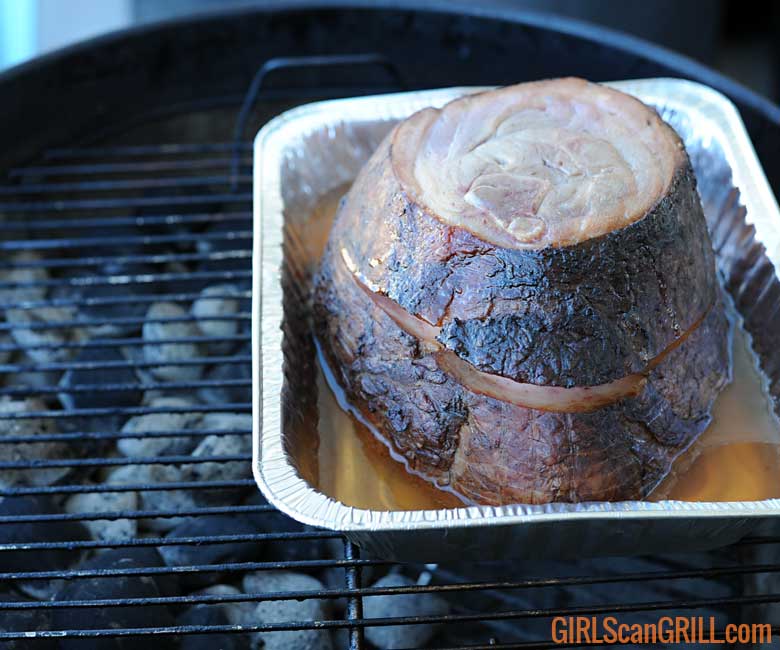
If you have a charcoal grill, you put your charcoal in your kettle or any other type of charcoal grill, you push your coals to one side.
Again, if you’re cooking over the coals, you’re grilling. If you’re cooking on the side where the coals are not, you’re barbecuing.
Pellet grills are a little bit different. They have a diffuser plate, so you’re pretty much always barbecuing on a pellet grill, unless you have a sear station where it reveals the heat source.
Then there’s also ceramic cookers like the Big Green Egg or the Kamado Joe. These are barbecues as well.
You can do direct heat by just putting in your coals, putting in the grill grate, and then you’ve got your fuel source right underneath your meat.
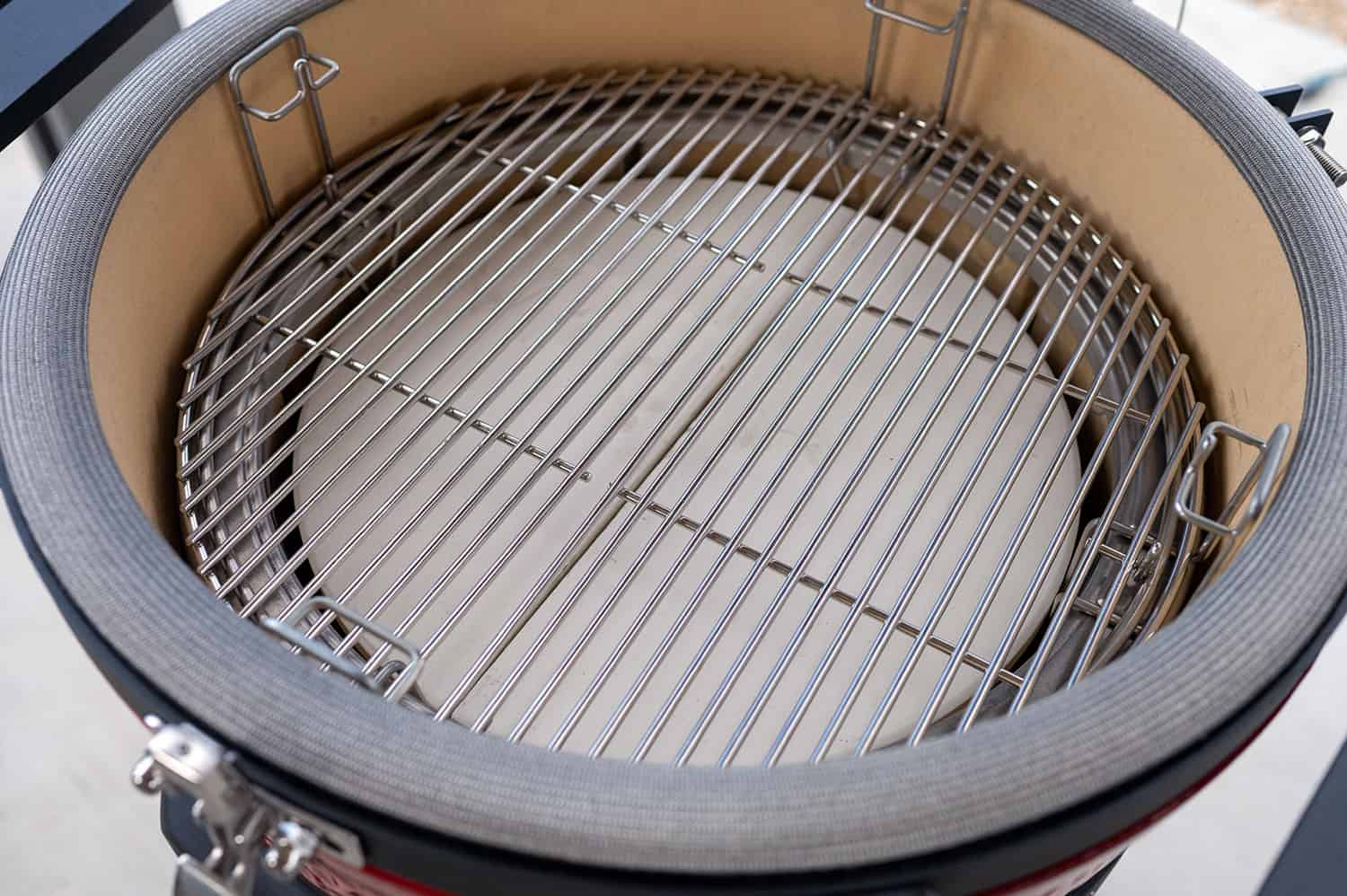
Or, you can turn it into a barbecue by adding the diffuser plate, which is usually a ceramic plate that goes on one level of the grill grates. Then, you put your grill grate above that, and then that diffuser plate makes the direct heat bounce back down to the charcoal.
So, you’re getting an indirect cook so you can do those low and slow, long barbecue cooks.
Hot and Fast BBQ
There’s another style of barbecue that I want to touch on that’s cooking hot and fast. It’s a little bit different than barbecue and a little bit different from grilling. It’s still cooking over indirect heat like barbecuing, but it’s above the 275-degree mark.
You’re usually cooking 275 to 325 degrees. So you’re getting that intense heat similar to grilling, but you’re still getting indirect intense heat, so you’re cooking things faster.
This is really popular on the competition circuit. I use it for almost every meat that I turn in for competition barbecue, so do so many other pitmasters. It’s a really fun technique.
Most of the time, people who are cooking hot and fast are cooking in drum smokers. These are 55-gallon barrel drums. Your charcoal is at the bottom.
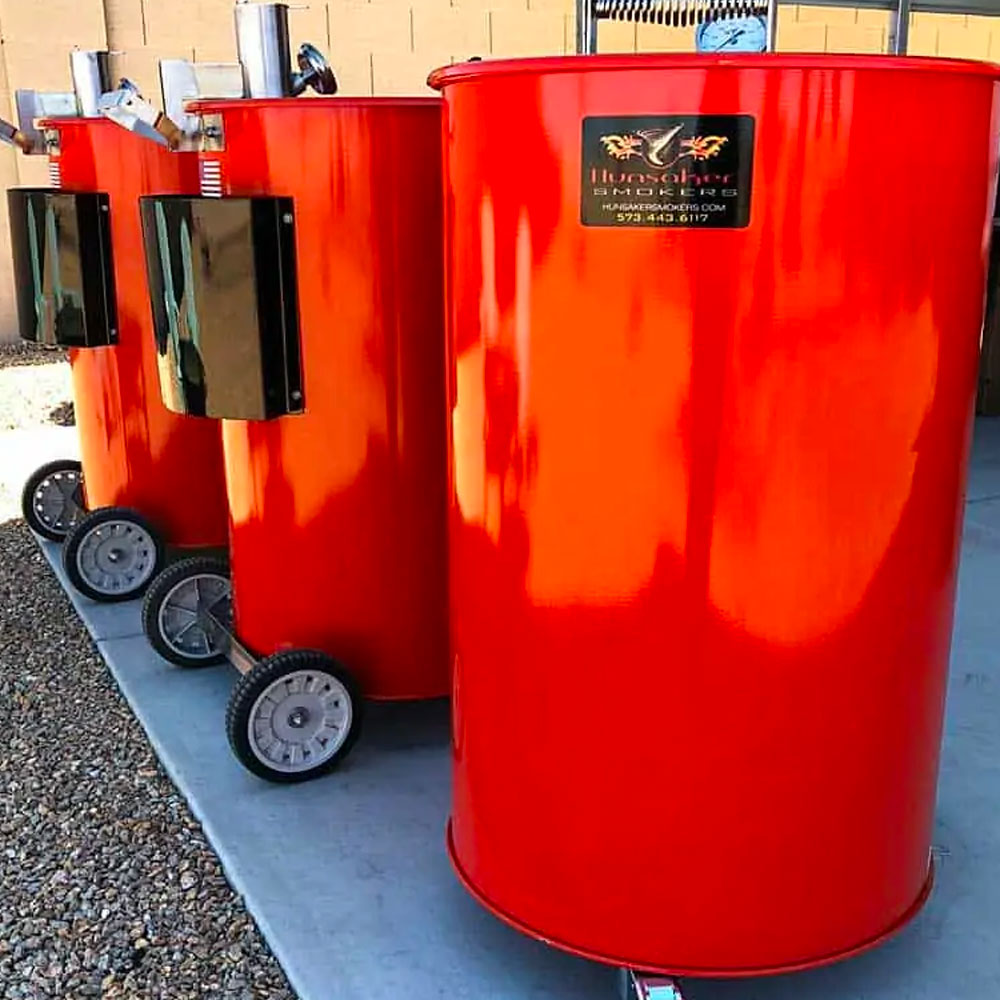
Some drums have diffuser plates like my Hunsakers. Some other drums, like the Gateways, don’t always use diffuser plates. You can go either way.
Because the meat is high and the coals are down low, you get that indirect heat because there’s such a distance between the coals and the food itself.
So what is smoking?
We’ve talked about grilling. We’ve talked about barbecuing. You understand the difference between direct heat and indirect heat. So what is smoking?
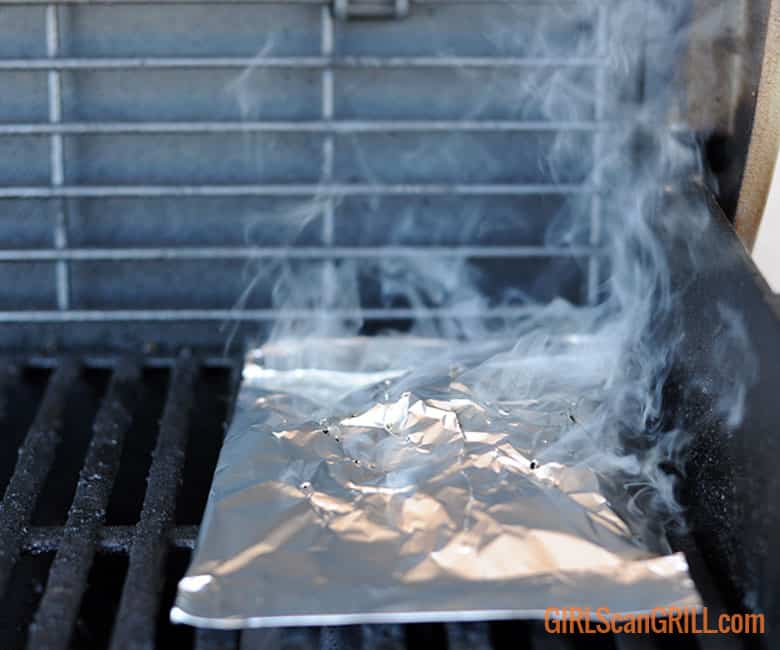
Smoking is essentially just adding the flavor of smoke. You can do this pretty much at any temperature. If you use a gas grill, you can even smoke by putting wood chips in a foil pouch.
If you’re cooking over charcoal, I like to add wood chunks instead of wood chips, cause they take a little bit longer to burn a little bit slower. And they emit that smoke for a longer period of time.
Basically, with smoking, you’re adding that smoke flavor. Just like you add a seasoning, like a salt or a pepper smoke has its own flavor.
And wood chunks come in so many different flavors, apple, pecan, mesquite, hickory, oak; they all provide a little bit different twist of a flavor to make your meat more flavorful.
You can actually also smoke without heat at all.
If you want to cold smoke cheese, you can do that by adding smoke as well.
Think about it. If you were to put cheese in your barbecue or on your grill and you turned it to 200 degrees, your cheese is going to melt and it’s going to make a mess.
You’re not going to get that smoked cheese flavor that might be familiar with smoked provolone or smoked gouda.
So instead, you leave your grill off and you want to use a device like a pellet tube, which basically is a metal tube that’s perforated. You add pellets inside or even wood chips inside.
You light that on fire and you set that on the grill and then you close your grill or smoker.
And then as the smoke fills the chamber, it’s going to add the smoke flavor to your cheese. Again, no heat, just smoke.
Same concept with smoked cocktails. There are things like the Smoking Gun, which adds some wood shavings, you light it, it’s got a tube, you can add it right into your cocktail, add some of that smoky flavor.
So there’s a lot of ways to do smoking without barbecuing and without grilling, but you can also combine them all. You can grill with smoke, you can barbecue with smoke.
Live fire cooking
Let’s move on to another style of outdoor cooking that I absolutely love. Live fire cooking.
I actually used to do a Live Fire Cooking Podcast with Derek Wolf from Over the Fire Cooking and Jon from Breeo. So you guys should go back and listen to some of those episodes.
When you’re doing live fire cooking, you’re not cooking on a grill. You’re cooking in more of an open air environment.
You don’t have a lid that closes most of the time. Instead, you might be cooking in a homemade fire pit or a smokeless fire pit, like a Breeo, or maybe you just have rocks around the ground and you put your wood in there.
Ideally, you’re starting with wood logs. You get your logs lit, you get them ashed down into some coals and you continue adding wood onto the fire as you’re cooking to keep your heat going.
You can actually use grill grates right over the firewood, or you can use an Asado cross, which is what you might see when people put whole animals up, I’ve done that several times.
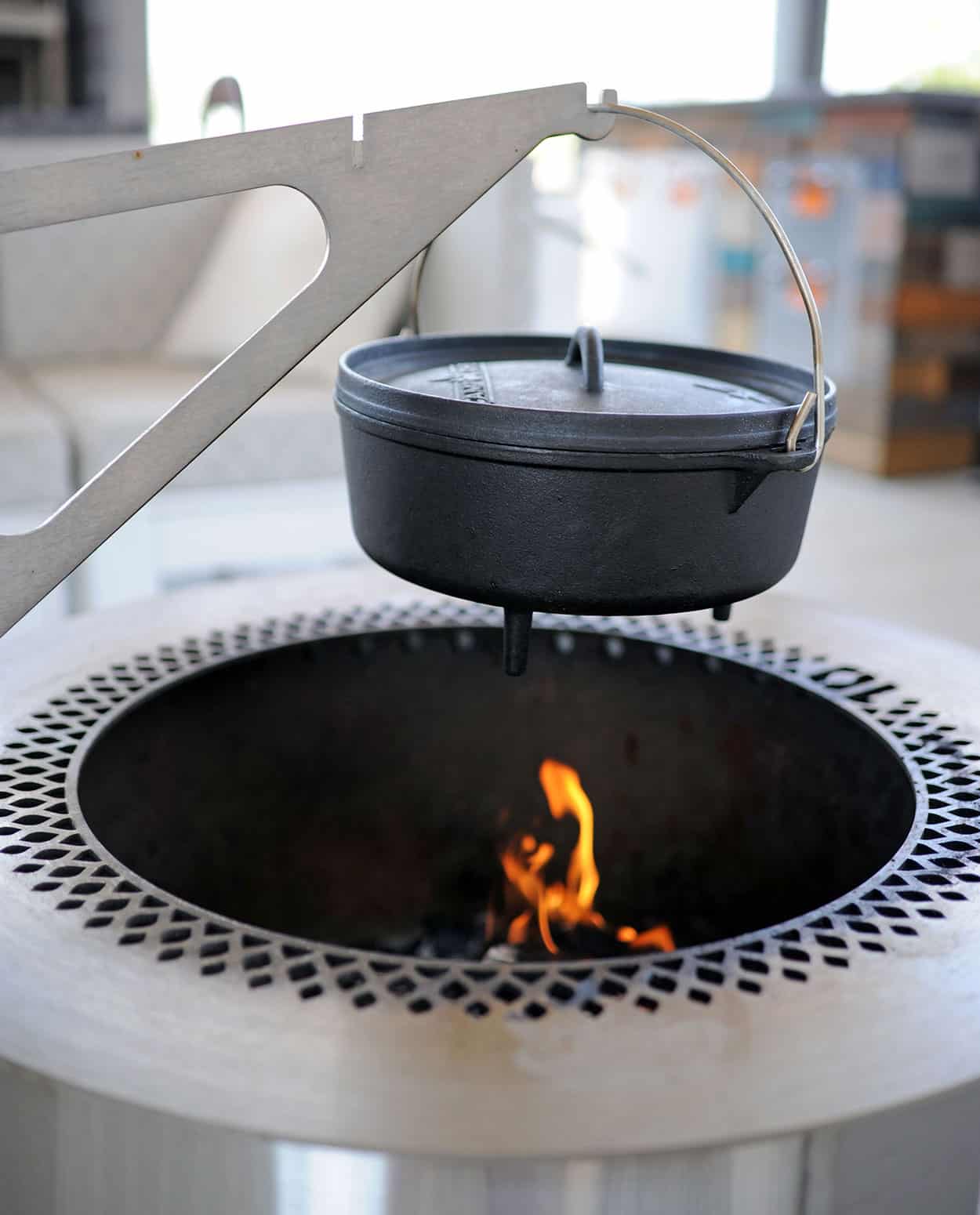
Or you can even hang stuff from a hook. You can do Dutch oven cooking with live fire cooking.
It’s definitely a little bit more advanced. You really have to understand the managing of heat. There are no dials to control. There are no apps to control what your temperature is, like you might find on a pellet grill or the new Kamado Konnected Joe.
It’s definitely more advanced, but it’s so rewarding and delicious when you pull food off of a live fire cook.
Get your griddle on
Another term that you might hear when you’re talking about outdoor cooking is griddling.
This isn’t barbecue. This isn’t grilling. It’s actually griddling.
Think about if you were to go to Waffle House and they’ve got that big flat top griddle in front of them. That’s where they’re doing the bacon eggs and pancakes.
Same thing, but you can now do that in your own backyard.
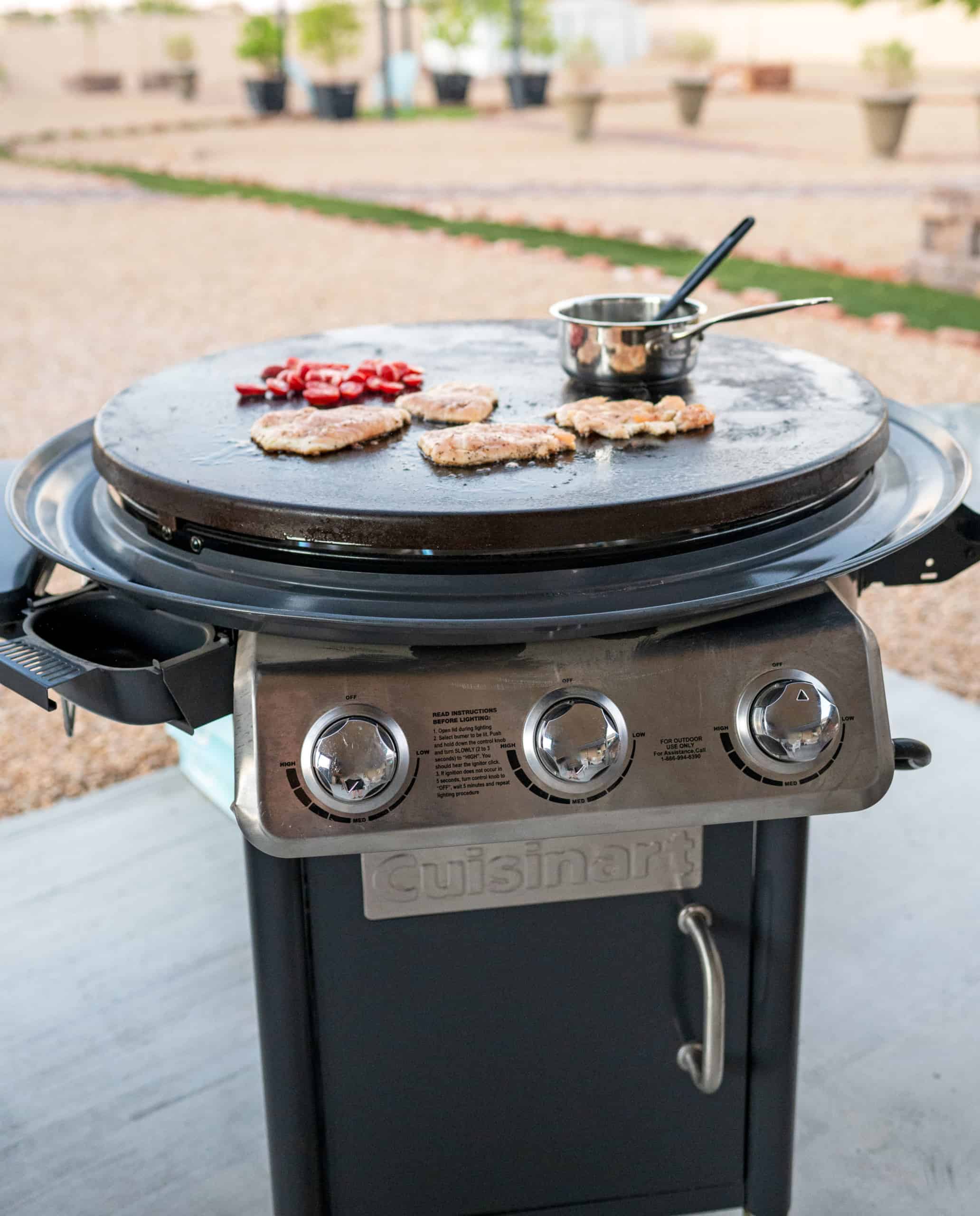
Blackstone’s a popular brand, Cuisinart has one, I’ve got an Evo. There are lots of different brands out there, but you basically have a big flat surface.
Usually, it’s heated by propane, sometimes electric, and it just allows you to bring more of your indoor cooking skills outside.
Can you BBQ with an electric grill?
I touched on gas grills, charcoal grills, pellet grills. There are also electric grills. This is where the electricity is actually the heat source.
So even though a pellet grill plugs in and some grills like charcoal grills, like the Masterbuilt plugs in, those aren’t really electric grills. They still have a fuel source.
With a pellet grill, it’s burning the pellets. That’s creating the heat. With the Masterbuilt, you’re still burning charcoal.
The electricity is not so much there to control the heat source. It’s more there to control a fan that blows to keep that heat source at a certain temperature. It also controls the dial display board.
Electric grills are different because the heat source is actually the electricity.
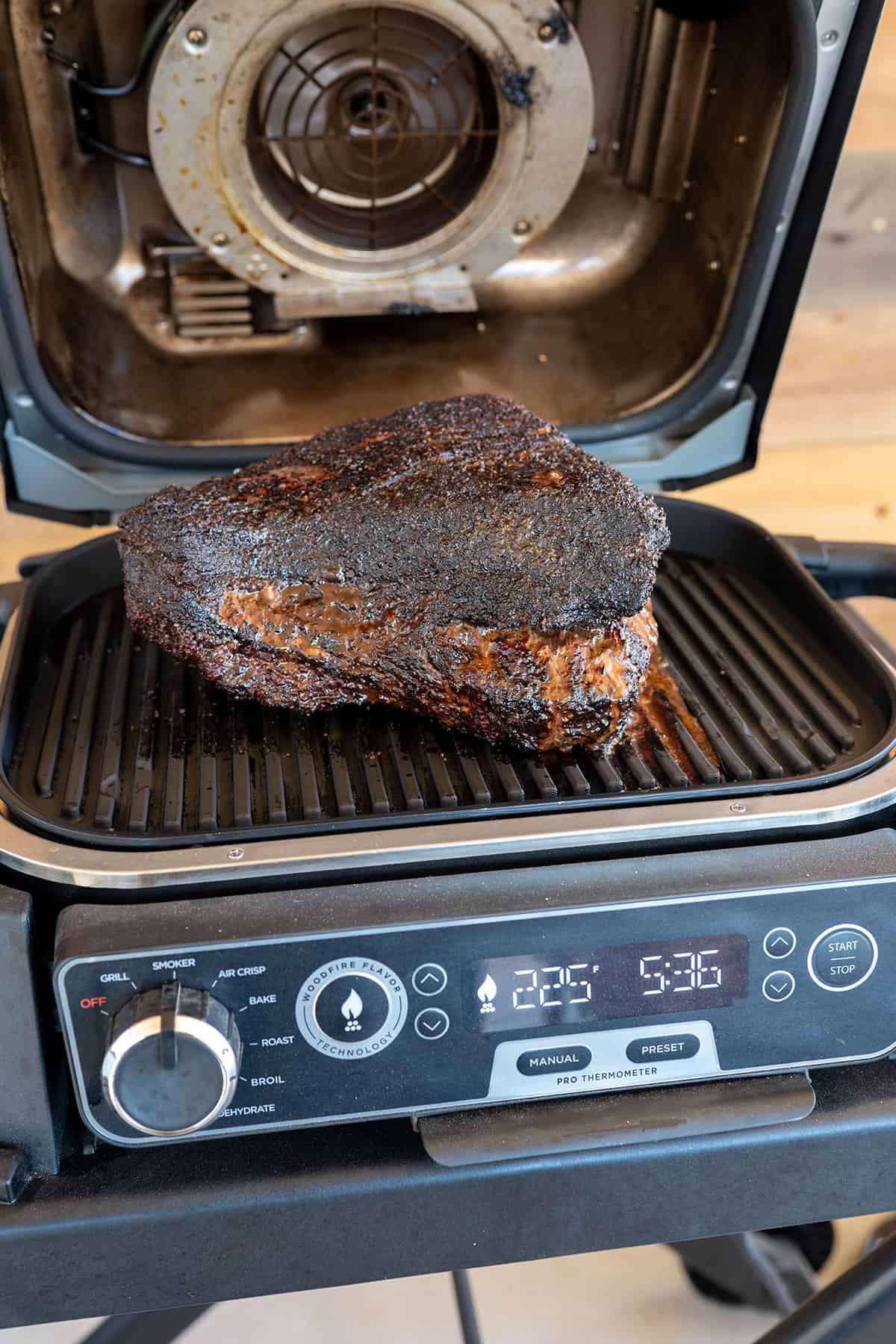
So the Ninja Grill, for example, they launched their wood fire outdoor grill a couple of years ago, and I helped with that launch. That heat source is actually coming from the electricity, but it can still function like a smoker because you can add wood pellets.
Once those wood pellets burn, that creates smoke inside the chamber of the grill. It doesn’t create heat, it doesn’t do the cooking, but it creates that smoke flavor. So that’s an alternate way to get a barbecue smoker/grill is to use an electric heat source.
Hopefully, all of this helped you understand the difference between barbecuing, grilling, smoking, live fire cooking, hot and fast cooking, and even griddling.
Tune into more of my BBQ Tips podcasts or scroll around the website for even more helpful BBQ Tips.
